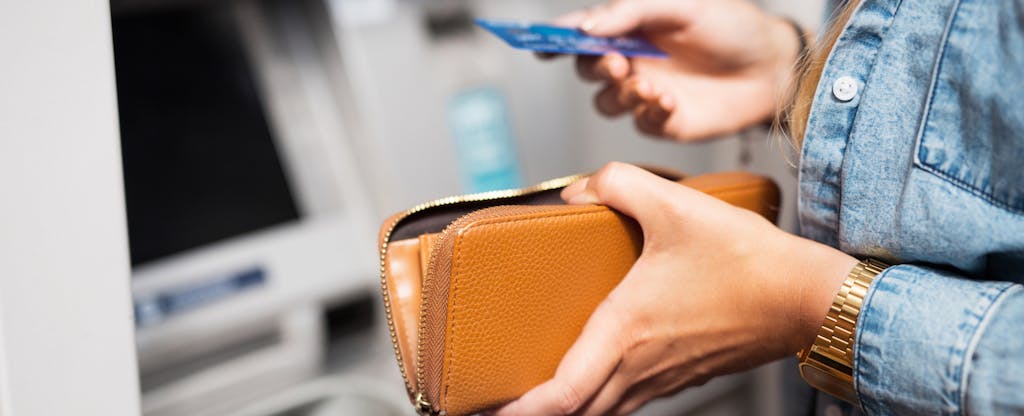It’s an awful feeling to need cash but have none available.
Whether you need money to pay your rent or pay back a friend, you could be tempted to find it in the quickest and easiest way possible. And while a cash advance seems both quick and easy, it can also be expensive — so you should think carefully about whether you really need to spend the money and if a cash advance is the best option for you.
The problems with cash advances
A cash advance is essentially using the available balance on your credit card to take out a short-term loan. Instead of borrowing money to buy a good or service with your credit card, you’re borrowing cash. Unfortunately, credit card companies don’t treat these two types of transactions the same.
If you buy a good or service with your credit card, the company will charge you the purchase interest rate stated in your contract, usually listed as the purchase APR. And if your card offers a grace period, you won’t start accruing interest on that purchase until your payment is due. That means that as long as your card has a grace period and you pay your balance in full and on time each month, you might never have to pay interest on your purchases.
Cash advances work a little differently though — grace periods typically don’t apply. You’ll start accruing interest on the advanced amount as soon as you take the money out, and your credit card company will likely charge you a higher interest rate for cash advances than it does for normal purchases, plus a processing fee.
How much can a cash advance actually cost you?
If there’s one main takeaway from this article, it’s that a cash advance could end up really costing you if you’re not careful. To make an informed decision on whether to take out a cash advance, start by calculating the total potential cost.
Start by finding your credit card contract and locating the following information:
- The cash advance fee
- The APR your card charges for cash advances (often higher than the APR for regular purchases).
- When you start accruing interest on the cash advance and how often the interest compounds (for many credit cards, it accrues immediately and compounds daily).
If you are carrying a prior balance, then taking out a cash advance can add further complications. Your credit card issuer may apply your payment (above the minimum) to the card balance with the highest interest, which may be a cash advance. But they may also apply the payment proportionally to the entire balance. In either case, you’ll continue accruing interest on any remaining balance that you haven’t paid off. This could make it more difficult to pay off any debt already on your card when you took out the cash advance.
Check your credit card’s terms and conditionals, or call your issuer, if you want to confirm how your payments will be applied.
In addition to potentially spending more time in debt, taking out a cash advance can also increase your credit card utilization ratio (how much of your available credit you’re using) — which can hurt your credit.
Why use a cash advance?
Even though there are a lot of costs associated with a credit card cash advance, you may still want to consider one in certain situations.
If you’re traveling in a foreign country and you haven’t notified your bank of your travels, you could end up stranded without access to local currency. If it suspects fraudulent activity, your bank may put a hold on your checking or savings account, leaving you disconnected from your cash. Usually, you can clear this up with a simple phone call, but you might not have access to cell service or international calling, or you may have trouble connecting with a bank representative due to a time difference. As long as your credit card hasn’t also been blocked, you could use it to take out a cash advance.
Other instances when you might need cash that you just don’t have in the bank include hiring a plumber, landscaper, housekeeper, babysitter or small business that doesn’t accept credit cards. But remember, the interest can add up so try to make sure you only borrow what you can pay back.
You may also decide on a cash advance in other cash-only situations, say, if you’re short on rent and your landlord doesn’t accept credit cards.
Alternatives to a cash advance
There are lots of reasons you might need quick-and-easy access to cash, and luckily there are some alternatives to paying the high fees and interest associated with cash advances. If you don’t need the money immediately, you could try taking out a personal loan.
You could also borrow the money from friends or family, take on odd jobs to earn extra cash or even ask your creditor if it will give you some extra time to pay (working with a credit counselor may help). If the purchase you want to make isn’t essential, you could also wait to spend the money until you have it.
Bottom line
There might be times when you feel that taking out a cash advance from your credit card is the only option, but there are likely other ways to access the money you need. Before you take your credit card to the ATM, make sure you know exactly how much the cash advance will cost you, whether you have another option and whether this purchase or payment can wait. Then you can make an informed decision on whether a cash advance is the right option for you.
